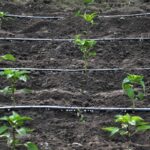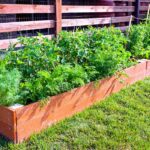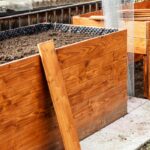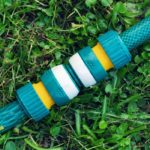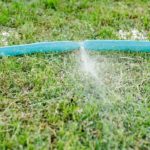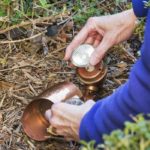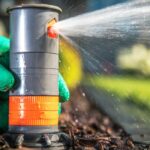One of the most popular methods for watering a home garden is using a soaker hose, which allows water to seep out slowly and evenly at the root, unlike sprinklers that shoot water up in the air at random. But with so many soaker hose options out there, how do you know which one is best for your garden?
Choose a soaker hose with the right length, diameter, and material for your needs and budget. You can find soaker hoses that range from 25 feet long to over 100 feet, with diameters from 3/8 inch to 1 inch. Rubber and vinyl are popular materials because they can withstand the elements.
Let’s take a closer look at some of things you should consider when choosing a soaker hose as well as what the difference is between a soaker hose and drip irrigation. We’ll also review some of the best soaker hoses on the market, including flat vs. round hoses, so that you can make the best possible decision.
What to Consider When Choosing a Soaker Hose
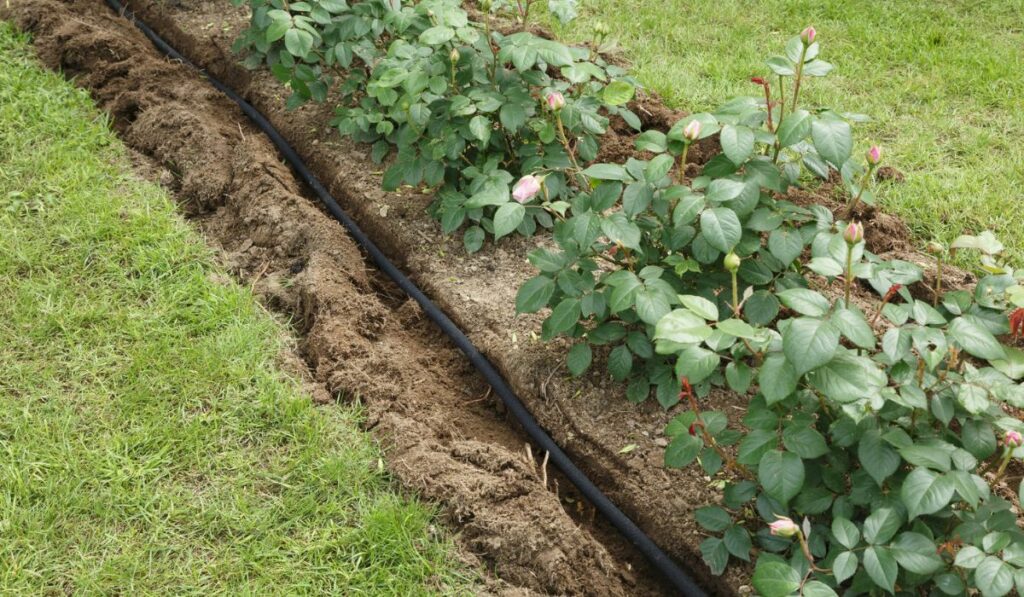
When shopping for a soaker hose, the three main things you’ll want to keep in mind are size, weight, and material.
Here’s a breakdown of each factor to help you choose the best soaker hose for your needs:
Size and Weight
Soaker hoses are available in various lengths, from 15 feet to 100 feet or more. The diameter of the hose is also important to consider. A wider-diameter hose will release more water and requires more water pressure to operate.
So, if you have a small garden, you can likely get away with a shorter, narrower hose. But if you have a large garden or lawn, you’ll need a longer, wider hose to get the job done.
Keep in mind that the larger the hose, the heavier it will be. Consider whether you will move the hose around a lot or if you plan to leave it in one spot.
Pore Size
The size of the pores on the hose will determine the amount of water released. When choosing the right pore size, consider the pressure of your water supply and the needs of your plants.
If you have a low-pressure water supply, you will need larger pores and more of them to release enough water to hydrate your plants. On the other hand, if you have a high-pressure water supply, you’ll need smaller pores. Otherwise, the amount of water can overwhelm the plants.
One way to tell if you have the proper pore size is to look at the beads of water coming out of the hose when you turn on the water. They should form large droplets.
If water is spraying out of the hose, the water pressure is too high for the pore size. If the water is barely trickling out, the pores are too small and won’t provide sufficient water to the roots.
Material
Soaker hoses are typically made from rubber, PVC, or polyurethane. All three materials are durable and will last several years with proper care.
Rubber hoses are the most durable but also the heaviest, often reinforced with another material, like vinyl. Polyurethane hoses are lightweight and easy to move, but they’re not as durable as rubber and will eventually crack.
PVC hoses are also lighter and easier to move around, but some have concerns about the chemicals used in their production leaching into the soil and water.
No matter which material you choose, look for one that is UV-resistant to extend its lifespan.
Price
Soaker hoses are available at various price points, from budget-friendly options to more expensive, premium models with additional features.
Keep in mind that you usually get what you pay for with soaker hoses. Cheaper models are often made from lower-quality materials and don’t last as long. They may also have more leaks and require more frequent repairs.
More expensive options are typically made from higher-quality materials and have better construction. They’re also more durable and last longer, so you don’t have to replace them as often.
Finding a balance between price and quality is key. There’s no need to spend a lot of money on a soaker hose if you don’t need the extra features or durability.
Similarly, there is no need to seek out the cheapest hose you can find if it means it’ll only last one season. Consider how often you’ll use the hose and how long you need it to last to find the best value.
Features
In addition to size, weight, material, and price, there are a few other features to consider when choosing a soaker hose.
Some hoses have an attached timer to set how long the hose runs, which is convenient if you want to set it and forget it. Others come with a built-in backflow preventer to keep water from flowing into your home’s plumbing.
Some hoses are also specifically designed for different types of gardens, like raised beds or steep hills. Others come with a kit with everything you need, like nozzles, adapters, and stakes.
The Difference Between a Soaker Hose and Drip Irrigation
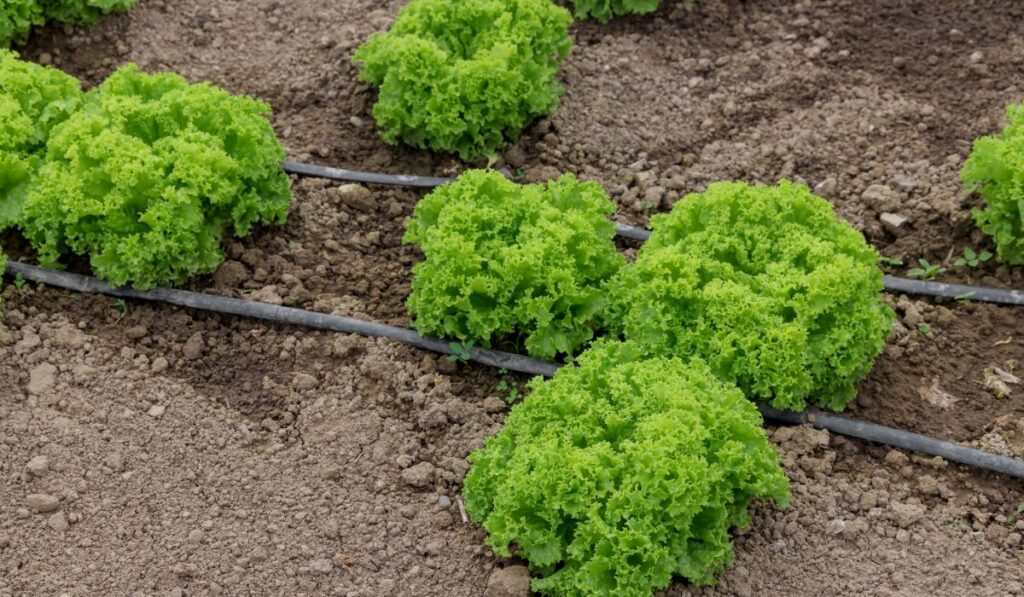
Now that you know what to look for in a soaker hose, let’s compare it to another popular watering method: drip irrigation.
Drip irrigation is a more sophisticated watering system that uses a network of hoses, emitters, and timers to deliver water directly to the roots of your plants. It’s great for large gardens or those with many different plants.
Soaker hoses are less expensive and easier to set up than drip irrigation systems, and they’re more flexible, so you can move them around your garden as needed. They’re also best for small gardens or those with fewer plants because they don’t require as much planning and setup.
Both soaker hoses and drip irrigation systems can save you time and water by delivering water directly to the plant roots, but it’s important to choose the right one for your needs.
If you’re looking for a more permanent solution, drip irrigation is the way to go. But, if you have a small garden or want to move your watering system around easily, soaker hoses are the better option.
What Are Some of the Best Soaker Hoses on the Market?
When choosing the top-rated soaker hose, we looked at factors such as durability, material, price, and features, along with customer reviews and ratings.
Here are our picks for the best soaker hoses:
Gilmour Flat Soaker Hose
The flat soaker hose from Gilmour (on Amazon) features clog-resistant fabric that prevents debris from clogging the hose. Made of durable and environmentally friendly recycled vinyl (PVC), the flat design makes it easy to use and store.
The hose is also lightweight and flexible, making it easy to maneuver as needed, so you can easily create custom irrigation for your garden by snaking it through rows of plants or under mulch.
The Gilmour hose is available in 25- and 75-foot options so that you can choose the right size for your needs, and you can purchase a Gilmour timer (on Amazon) to further automate your watering system. Plus, the seven-year warranty offers peace of mind if anything goes wrong.
One downside is that the fabric and the flat design make the hose prone to kinking, which can cut off water flow. So, if you don’t intend to move the hose around much once it’s in place, this might be a non-issue. But if you need to adjust your irrigation system often, it’s something to keep in mind.
Pros:
- Made of recycled vinyl
- Clog-resistant fabric helps deliver a consistent soak
- Lightweight and flexible for easy maneuvering
- Comes with a seven-year warranty
Cons:
- The hose is easy to kink, which can cut off water flow
Rocky Mountain Goods Soaker Hose
The Rocky Mountain Goods Soaker Hose (on Amazon) is an excellent choice if you’re looking for a durable, long-lasting option for your garden. The recycled rubber is eco-friendly, and the heavy-duty construction means it will stand up to years of use.
Rubber is heavier and less flexible than vinyl, so this hose might be more challenging to maneuver than other options on the market. It’s therefore ideal for permanent placement.
One downside is that the hoses are only available in 25- and 50-foot options. So, if you have a large garden, you may need multiple hoses to cover the entire area. But you can add more length to the hose with the included quick-attach fittings.
This hose also offers a seven-year warranty so that you can be confident in its quality.
Pros:
- Made of recycled rubber
- Durable construction
- Includes quick-connect fittings
Cons:
- Heavier than some other options
- Only available in 25- and 50-foot lengths
Water Right 700 Series Soaker Hose
The Water Right 700 Series Soaker Hose (on Amazon) is ideal for gardeners who want to be sure their plants get clean water. FDA-grade polyurethane makes it free of harmful chemicals, and the lead-free brass connections help to ensure that no toxins are leaching into the water.
This hose is also flexible, so you can easily maneuver it around your garden, even in freezing temperatures. Plus, specially engineered rubber strain reliefs at each end help prevent kinking, so that you can move the hose around without worrying about cutting off water flow.
The Water Right 700 Series Soaker Hose is available in 25-, 50-, and 100-foot options, and the seven-year warranty offers peace of mind should anything go wrong.
Pros:
- Made of FDA-grade polyurethane
- Lead-free brass connections
- Flexible and easy to move around
- Engineered strain reliefs prevent kinking
Cons:
- More expensive than other hoses
Flat vs. Round Hoses: What to Know
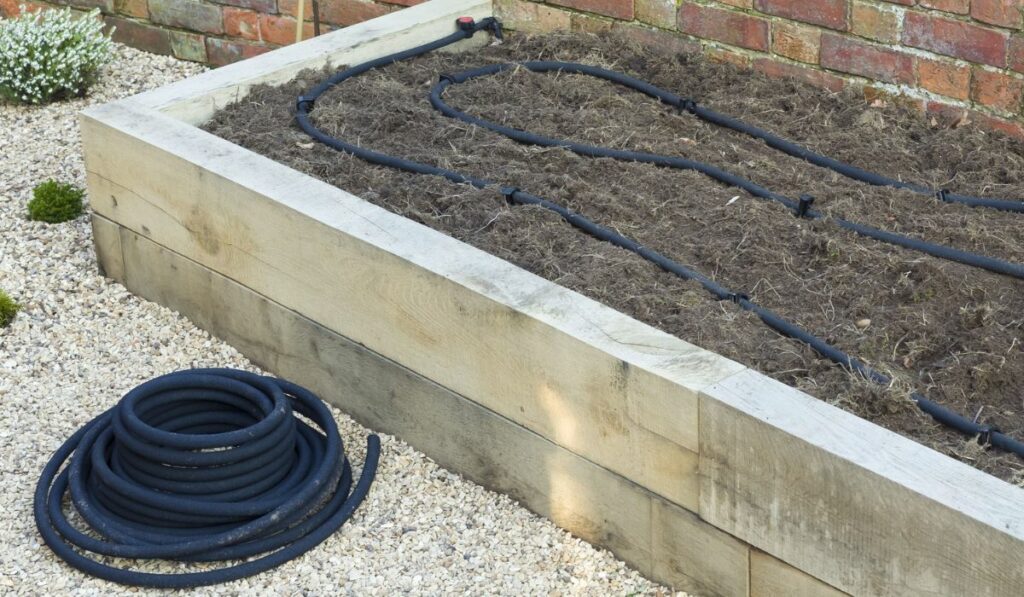
Flat soaker hoses are just what they sound like — hoses that are flat in shape. One of the biggest advantages of flat soaker hoses is that they’re much easier to store than round hoses.
Kinking can be an issue for flat hoses because they don’t have the same flexibility as round hoses. They’re also more difficult to maneuver around tight turns. And they tend to be less durable due to their thinner construction.
Round soaker hoses are the traditional hose shape and are more flexible, making them easier to maneuver around your garden.
The main advantage of round soaker hoses is their durability. They’re less likely to puncture or tear than flat hoses. And they’re better at evenly distributing water throughout your garden, saving you time and effort in the long run.
The main downside of round soaker hoses is that they can be more difficult to store than flat hoses. If you don’t plan to move your soaker hose around very often, this won’t be an issue.
What Else to Keep in Mind
When choosing a soaker hose, there are a few other things to keep in mind.
First, determine the size of your yard and how much coverage you need. A 100-foot hose will cover much more ground than a 50-foot hose, so choose accordingly.
Next, consider the layout of your garden and whether a soaker hose will reach all of your plants. If you have a lot of obstacles in your way, you may need to buy multiple hoses or look for a model with a longer reach.
What type of plants do you have, and how much water do they need? If you have delicate plants that require less water, look for a hose with smaller pores. Conversely, if you have thirsty plants that need a lot of water, look for a hose with larger pores.
Finally, factor in your budget and how often you’ll use the hose. If you only need it for one season or don’t mind replacing it often, you can go with a cheaper model. But, if you want a hose that will last for years, it’s worth investing in a higher-quality hose that will last longer.

